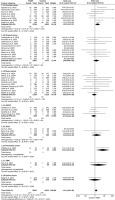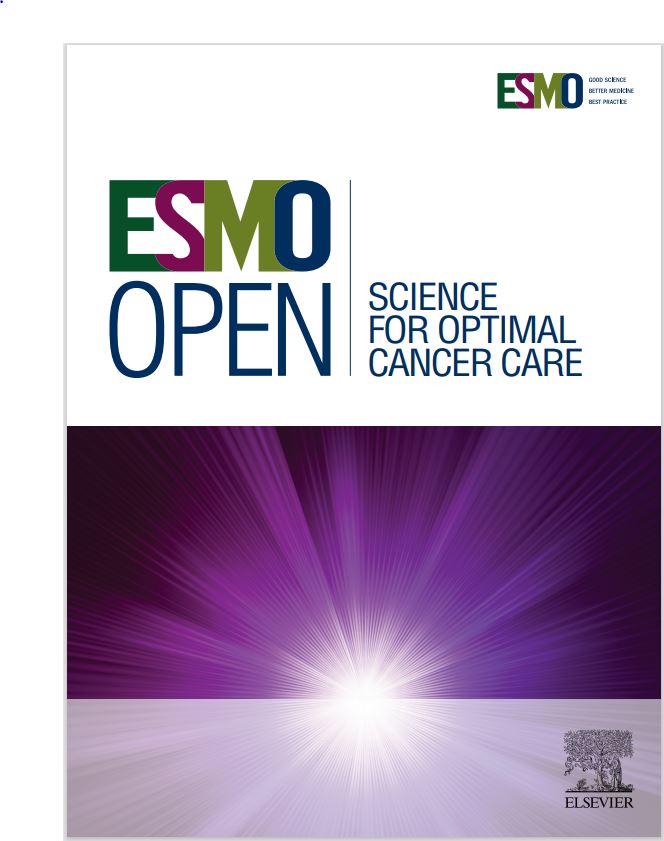Venous thromboembolic event risk with PARP inhibitors in solid tumors: a systematic review and meta-analysis
IF 8.3
2区 医学
Q1 ONCOLOGY
引用次数: 0
Abstract
Background
Poly (ADP-ribose) polymerase inhibitors (PARPi) are linked to thrombotic events, but the thrombosis risk in various cancers is unclear. This study evaluates the incidence and risk of venous thromboembolic events (VTEs) in patients with solid tumors treated with PARPi.
Materials and methods
This meta-analysis included randomized controlled phase II and III clinical trials in which patients with prostate, breast, ovarian, pancreatic, glioblastoma, small-cell lung (SCLC), and non-small-cell lung (NSCLC) cancers were treated with PARPi as monotherapy or in combination. The primary endpoint was to assess the frequency and risk of VTEs in patients treated with PARPi, while the secondary endpoint compared the incidence across different cancer subtypes.
Results
The analysis included 15 008 patients from 38 studies: 8805 in the PARPi group and 6203 in the control group. There were 11 ovarian cancer (n = 4348), 8 prostate cancer (n = 3872), 9 breast cancer (n = 4448), 4 NSCLC (n = 1063), and 3 SCLC (n = 583) studies, and 1 study each for pancreatic cancer (n = 50), glioblastoma (n = 123), and gastric (n = 521) cancer. The incidence of any-grade VTEs with PARPi was observed to be 2.4%, compared with 1.6% in controls, suggesting a possible increase in risk [odds ratio (OR) 1.37, 95% confidence interval (CI) 1.00-1.88, P = 0.050]. This association appeared to be more pronounced in patients with prostate cancer (OR 1.98, 95% CI 1.06-3.70, P = 0.030) and pancreatic cancer (OR 7.22, 95% CI 1.40-37.25, P = 0.020).
Conclusions
While our findings indicate a possible association between PARPi and VTE risk in certain cancer types, this risk appears to be influenced by factors such as cancer subtype and treatment combinations. The overall contribution of PARPi monotherapy to VTE risk may be limited, and the results should be interpreted with caution due to study heterogeneity, wide CIs, and the absence of patient-level data.

实体瘤中静脉血栓栓塞事件风险与PARP抑制剂:一项系统回顾和荟萃分析。
背景:聚(adp -核糖)聚合酶抑制剂(PARPi)与血栓形成事件有关,但各种癌症的血栓形成风险尚不清楚。本研究评估了PARPi治疗实体瘤患者静脉血栓栓塞事件(vte)的发生率和风险。材料和方法:本荟萃分析包括随机对照II期和III期临床试验,其中前列腺癌、乳腺癌、卵巢癌、胰腺癌、胶质母细胞瘤、小细胞肺癌(SCLC)和非小细胞肺癌(NSCLC)患者接受PARPi单药或联合治疗。主要终点是评估PARPi治疗患者静脉血栓栓塞的频率和风险,而次要终点是比较不同癌症亚型的发病率。结果:该分析包括来自38项研究的15,008例患者:PARPi组8805例,对照组6203例。11例卵巢癌(n = 4348), 8例前列腺癌(n = 3872), 9例乳腺癌(n = 4448), 4例非小细胞肺癌(n = 1063), 3例小细胞肺癌(n = 583),胰腺癌(n = 50),胶质母细胞瘤(n = 123),胃癌(n = 521)各1例。任何级别静脉血栓栓塞合并PARPi的发生率为2.4%,而对照组为1.6%,提示风险可能增加[优势比(OR) 1.37, 95%可信区间(CI) 1.00-1.88, P = 0.050]。这种相关性在前列腺癌(OR 1.98, 95% CI 1.06-3.70, P = 0.030)和胰腺癌(OR 7.22, 95% CI 1.40-37.25, P = 0.020)患者中更为明显。结论:虽然我们的研究结果表明PARPi与某些癌症类型的静脉血栓栓塞风险之间可能存在关联,但这种风险似乎受到癌症亚型和治疗组合等因素的影响。PARPi单药治疗对静脉血栓栓塞风险的总体贡献可能有限,由于研究的异质性、广泛的ci和缺乏患者水平的数据,对结果的解释应谨慎。
本文章由计算机程序翻译,如有差异,请以英文原文为准。
求助全文
约1分钟内获得全文
求助全文
来源期刊

ESMO Open
Medicine-Oncology
CiteScore
11.70
自引率
2.70%
发文量
255
审稿时长
10 weeks
期刊介绍:
ESMO Open is the online-only, open access journal of the European Society for Medical Oncology (ESMO). It is a peer-reviewed publication dedicated to sharing high-quality medical research and educational materials from various fields of oncology. The journal specifically focuses on showcasing innovative clinical and translational cancer research.
ESMO Open aims to publish a wide range of research articles covering all aspects of oncology, including experimental studies, translational research, diagnostic advancements, and therapeutic approaches. The content of the journal includes original research articles, insightful reviews, thought-provoking editorials, and correspondence. Moreover, the journal warmly welcomes the submission of phase I trials and meta-analyses. It also showcases reviews from significant ESMO conferences and meetings, as well as publishes important position statements on behalf of ESMO.
Overall, ESMO Open offers a platform for scientists, clinicians, and researchers in the field of oncology to share their valuable insights and contribute to advancing the understanding and treatment of cancer. The journal serves as a source of up-to-date information and fosters collaboration within the oncology community.
 求助内容:
求助内容: 应助结果提醒方式:
应助结果提醒方式:


